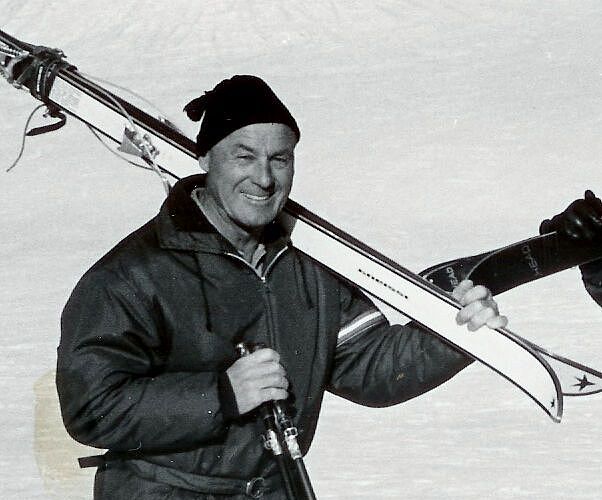Region Seefeld – Tirols Hochplateau
The region's Nordic history
Seefeld's Nordic success story
The Olympic flame has burned three times in the Region Seefeld, which hosted the Nordic events at the Olympic Winter Games in 1964 and 1976, as well as the Youth Olympic Winter Games in 2012. In 1949, the region also made sports history by hosting the first Winter Deaflympics – the Winter Games for deaf athletes – establishing an international sports tradition that continues to this day. Seefeld has also made its mark as a host of Nordic World Championships. The Nordic Ski World Championships in 1985 and 2019 reinforced its reputation as one of the leading destinations for Nordic winter sports.
1949: The first Winter Deaflympics in Seefeld
The first Winter Deaflympics took place in Seefeld, Tirol, from January 26 to 30, 1949, marking the beginning of the Winter Games for deaf athletes. At that time, 33 athletes from five countries participated.
1964: The Olympic Winter Games and the Beginning of Cross-Country Skiing for Everyone
During the 1964 Olympic Winter Games in Innsbruck, Seefeld also underwent significant infrastructure improvements: the train station was modernized, and the major north-south bypass was built on the eastern edge of the village. At that time, cross-country skiing was purely a competitive sport, requiring intense training and extreme endurance. International teams used Seefeld as a training location, and the first attempts were made to create practice trails for better conditions. Initially, grooming was done using tractors and municipal workers on skis, and later, even a Ski-Doo imported from Canada was used. This marked the beginning of a movement in Seefeld that introduced cross-country skiing as a leisure activity—back then called "ski hiking." This development played a key role in transforming cross-country skiing from a niche competition sport into a widely accessible and experience-oriented activity.
1976: Seefeld Sets New Standards
For the 1976 Olympic Winter Games, Seefeld launched several sustainable projects. One of the most significant developments was the creation of the pedestrian zone, made possible by the construction of the Olympia Road (northern bypass) and the Gschwandtkopf Tunnel (southern bypass). Today, this pedestrian zone is one of the oldest in Tirol. Additionally, the town hall was built, which also became home to the tourism office.
From a sports perspective, 1976 brought major improvements to Seefeld’s Nordic skiing infrastructure. The cross-country ski trail network was significantly expanded, and the Sports and Congress Center (SKZ) was built, introducing the first swimming pool and sauna on the high plateau. During the Olympic Winter Games, the center served as the main press headquarters. These developments ignited the spark that ultimately established Seefeld as the leading region for Nordic sports.
1985: The FIS Nordic Ski World Championships
Another milestone year for Seefeld was 1985 when it hosted the FIS Nordic Ski World Championships. For the first time, professional machines were used by local businesses to groom the trails, creating two perfectly prepared tracks—a groundbreaking innovation that made overtaking in competitions much easier. The World Championship Hall served as the press center, and a monumental landmark was erected at the Wildsee: the Trident (Dreizack), symbolizing the two Olympic Games and the World Championship.
2010: Expansion into an International Training Destination
In the summer of 2010, Seefeld further prepared for the future of Nordic sports. A modern biathlon and ski jumping facility, along with a new roller-ski track for summer training, was built. The biathlon facility was upgraded with the latest technology to provide optimal training and competition conditions.
2019: Second FIS Nordic Ski World Championships
With the experience and expertise of the Austrian Ski Federation (ÖSV), outstanding infrastructure, award-winning trails, and a strong commitment to sustainable sports, the region once again impressed – securing the bid for the 2019 FIS Nordic Ski World Championships in Barcelona in 2014.
The 2019 FIS Nordic Ski World Championships in Seefeld was a major sporting event, featuring 12 competition days, 22 medal events, and 204,400 spectators. To ensure optimal conditions, extensive modernizations were carried out. The cross-country ski trail network was sustainably improved, a snowmaking reservoir was built at Gschwandtkopf, and the Nordic snowmaking system was upgraded. The WM Tower was constructed at the Seefeld Sports Arena, and the Seefeld train station was modernized while preserving its historical heritage, making it fully accessible and equipping it with a car-free forecourt. Additionally, parts of the World Championship Hall were renovated and expanded to serve as a press center and multipurpose venue.
These efforts helped make the 2019 World Championships an unforgettable experience for both athletes and visitors.
2027: The Deaflympics return to Seefeld
In January 2027, the Region Seefeld, together with Innsbruck, will proudly host the 21st Winter Deaflympics. After more than seven decades, the Winter Games for the deaf will return to one of their original birthplaces.
Region Seefeld Today: World-Class Cross-Country Skiing in the Alps
Since 2004, the Nordic Combined Triple World Cup has been held annually in Seefeld, making it a highlight for both athletes and spectators. Another top sporting event is the Ganghoferlauf Leutasch, part of the renowned Euroloppet marathon series.
Today, the Region Seefeld offers 245 kilometers of perfectly groomed trails, providing ideal conditions for Nordic skiing. Additional features such as sit-ski trails, a night trail, and biathlon introduction courses further enhance the diverse Nordic sports experience.
